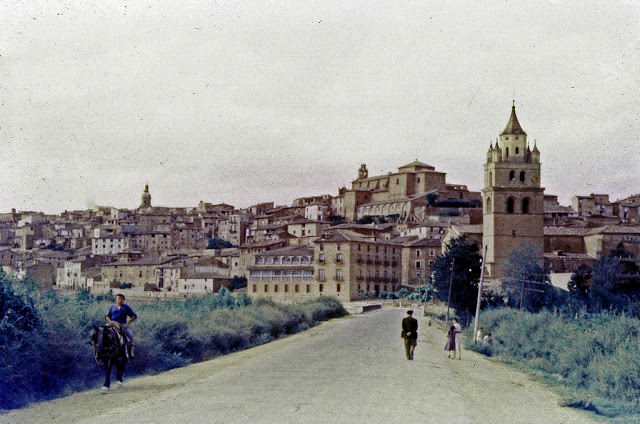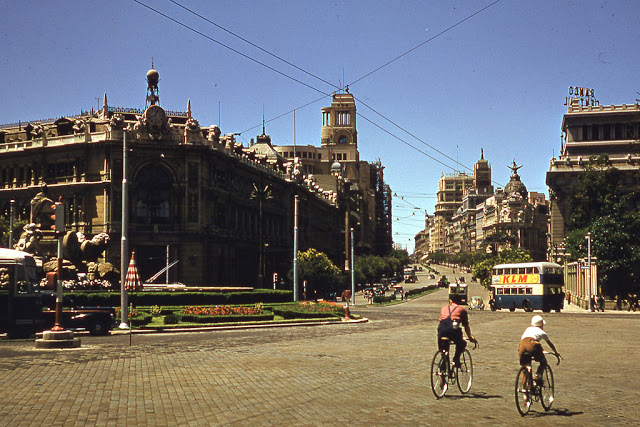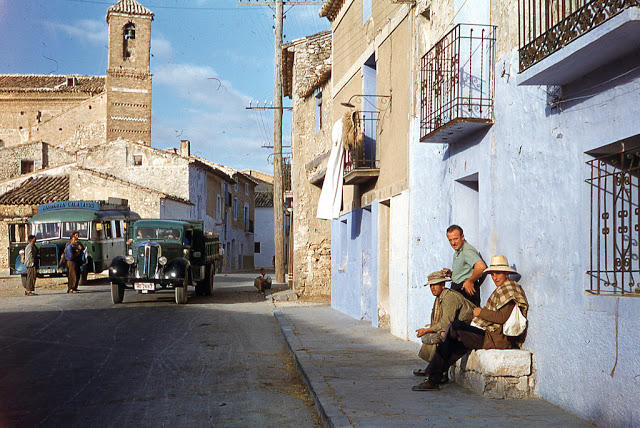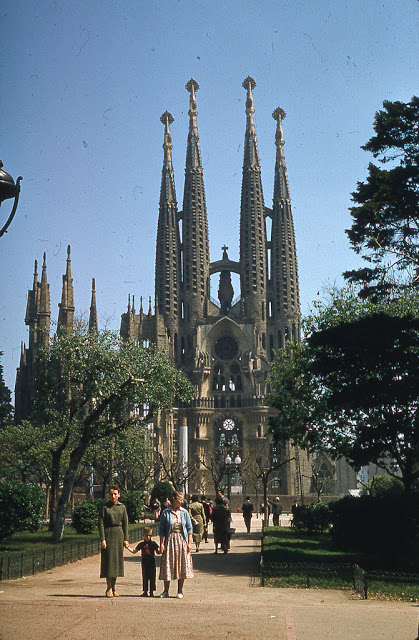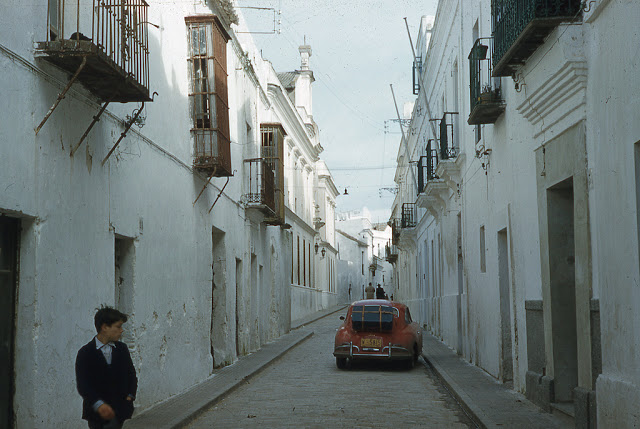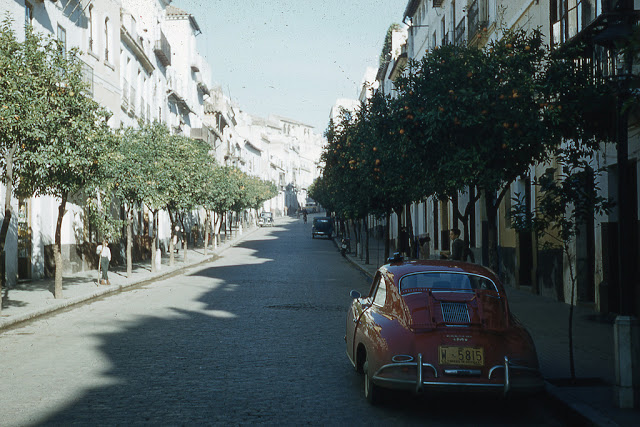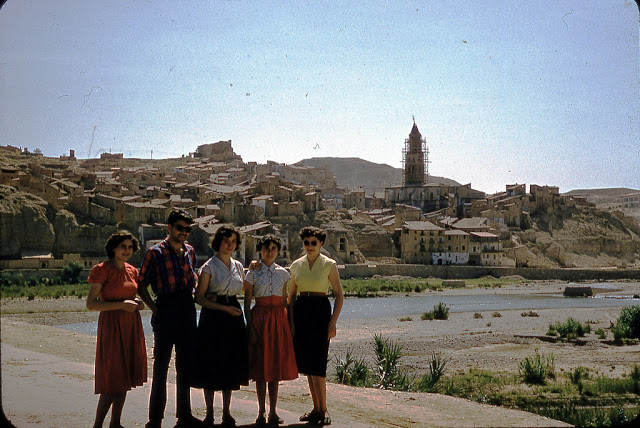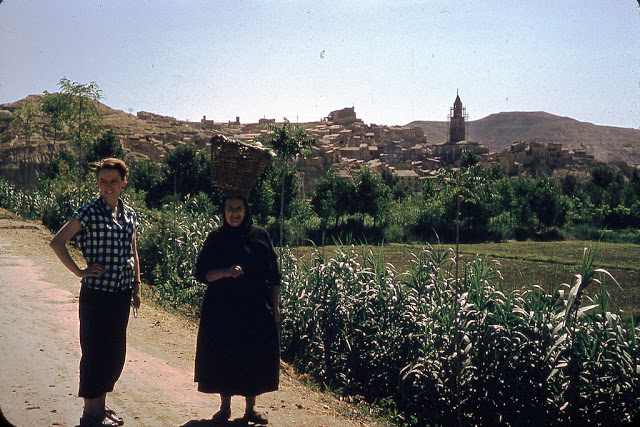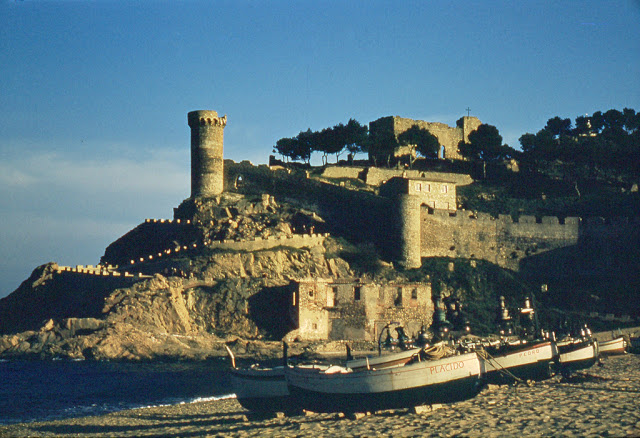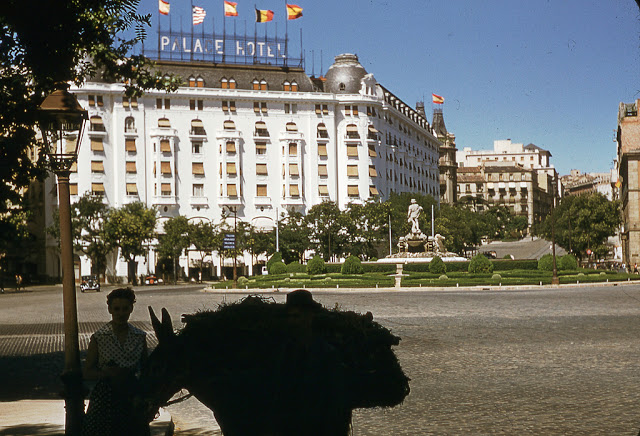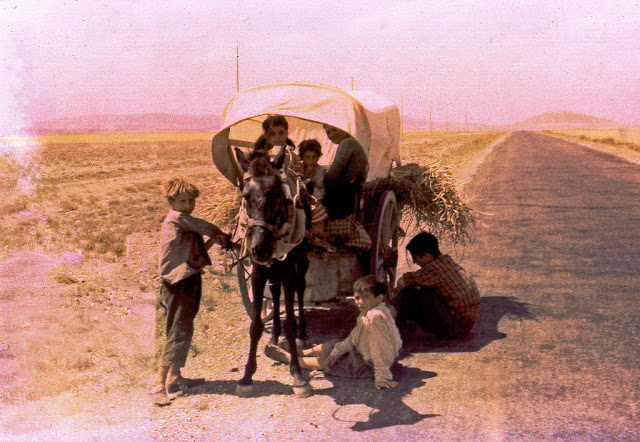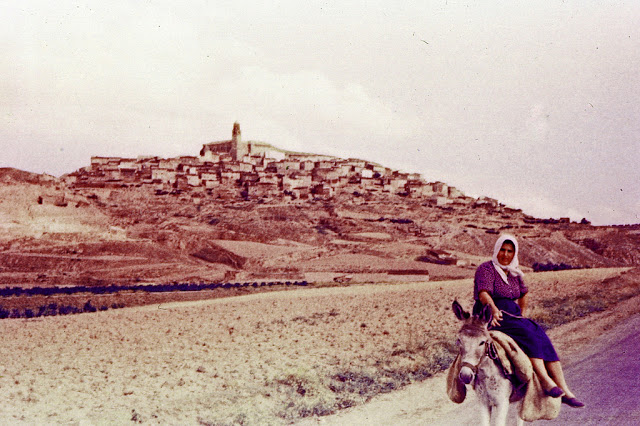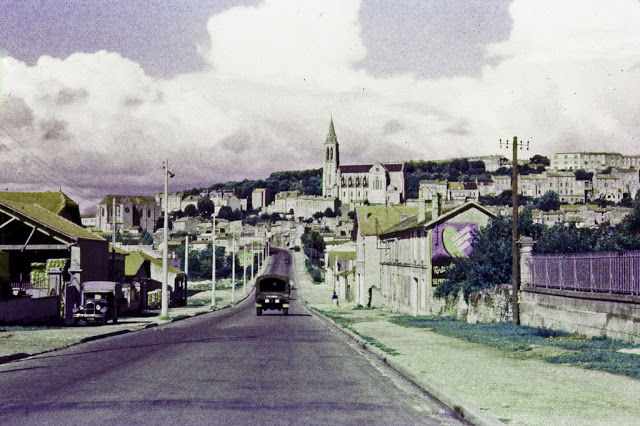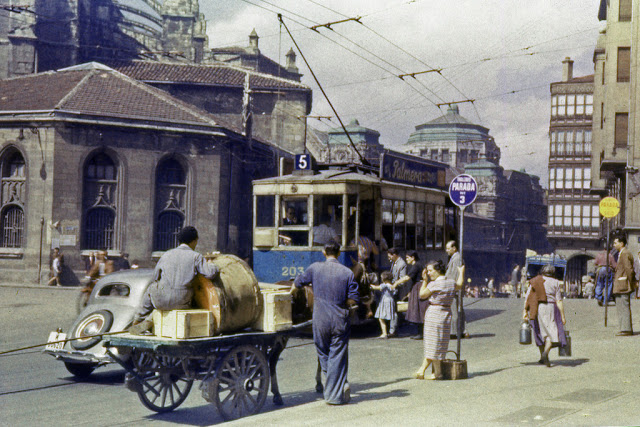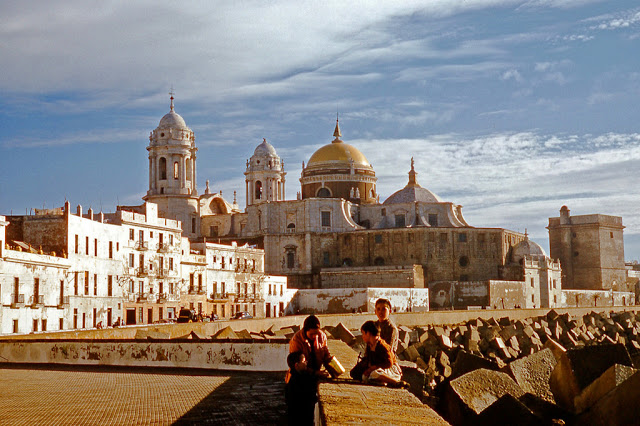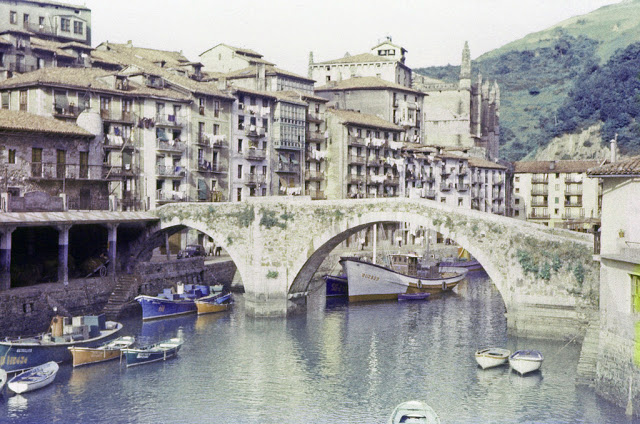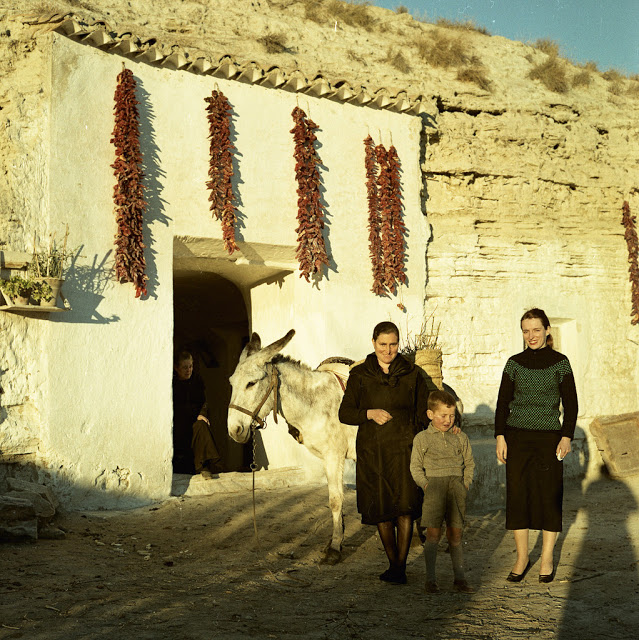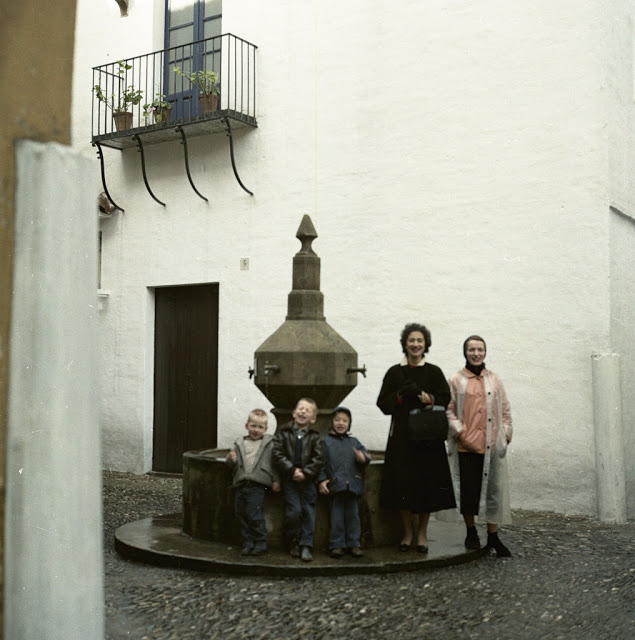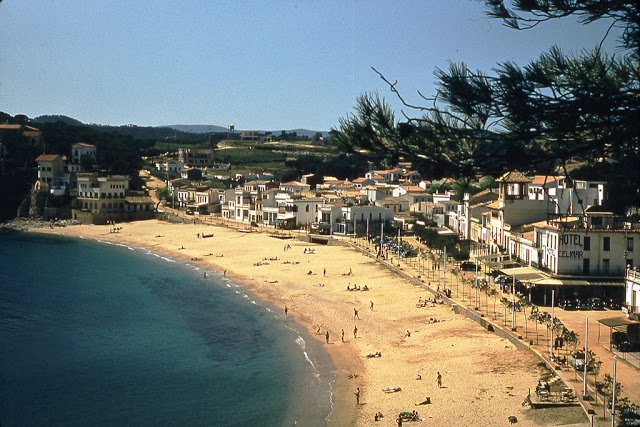Spain is an utterly beautiful and picturesque country with an opulent history. During the 1950s, Spain was under the dictatorship of Francisco Franko. The country in this period was also known as Francoist Spain.During Franco’s rule, Spain was officially neutral in World War II and remained largely economically and culturally isolated from the outside world. Under a military dictatorship, Spain saw its political parties banned, except for the official party (Falange). Labor unions were banned and all political activity using violence or intimidation to achieve its goals was forbidden.
This colorful collection of the picturesque Spain was taken by Michael Leonard with his Leica camera with Kodachrome and some other color films. Here are some of his amazing color photographs.
Under Franco, Spain actively sought the return of Gibraltar by the United Kingdom, and gained some support for its cause at the United Nations. During the 1960s, Spain began imposing restrictions on Gibraltar, culminating in the closure of the border in 1969. It was not fully reopened until 1985.
Spanish rule in Morocco ended in 1967. Though militarily victorious in the 1957–58 Moroccan invasion of Spanish West Africa, Spain gradually relinquished its remaining African colonies. Spanish Guinea was granted independence as Equatorial Guinea in 1968, while the Moroccan enclave of Ifni had been ceded to Morocco in 1969. Two cities in Africa, Ceuta and Melilla remain under Spanish rule and sovereignty.
The latter years of Franco’s rule saw some economic and political liberalization, the Spanish miracle, including the birth of a tourism industry. Spain bega to catch up economically with its European neighbors.Franco ruled until his death on 20 November 1975, when control was given to King Juan Carlos. In the last few months before Franco’s death, the Spanish state went into a paralysis. This was capitalized upon by King Hassan II of Morocco, who ordered the ‘Green March’ into Western Sahara, Spain’s last colonial possession.
The Spanish transition to democracy or new Bourbon restoration was the era when Spain moved from the dictatorship of Francisco Franco to a liberal democratic state. The transition is usually said to have begun with Franco’s death on 20 November 1975, while its completion is marked by the electoral victory of the socialist PSOE on 28 October 1982.
Under its current (1978) constitution, Spain is a constitutional monarchy. It comprises 17 autonomous communities (Andalusia, Aragon, Asturias, Balearic Islands, Canary Islands, Cantabria, Castile and León, Castile–La Mancha, Catalonia, Extremadura, Galicia, La Rioja, Community of Madrid, Region of Murcia, Basque Country, Valencian Community, Navarre) and 2 autonomous cities (Ceuta and Melilla).
Between 1978 and 1982, Spain was led by the Unión del Centro Democrático governments. In 1981 the 23-F coup d’état attempt took place. On 23 February Antonio Tejero, with members of the Guardia Civil entered the Congress of Deputies, and stopped the session, where Leopoldo Calvo Sotelo was about to be named prime minister of the government. Officially, the coup d’état failed thanks to the intervention of King Juan Carlos. Spain joined NATO before Calvo-Sotelo left office. Along with political change cameradical change in Spanish society. Spanish society had been extremely conservative under Franco, but the transition to democracy also began a liberalization of values and societal mores.
